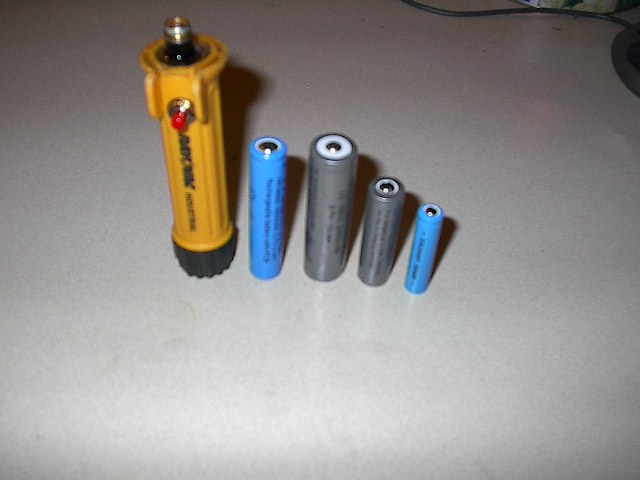"In 1896, the first
dry cell battery was invented. Unlike previous batteries, it used a paste electrolyte instead of a liquid. This was the first battery suitable for portable electrical devices, as it did not spill or break easily and worked in any orientation. Portable hand-held electric lights offered advantages in convenience and safety over (combustion)
torches,
candles and
lanterns. The electric lamp was odorless, smokeless, and emitted less heat than combustion-powered lighting. It could be instantly turned on and off, and avoided fire risk.
On January 10, 1899, British inventor David Misell obtained U.S. Patent No. 617,592,
assigned to
American Electrical Novelty and Manufacturing Company.
[3] This "electric device" designed by Misell was powered by "D" batteries laid front to back in a paper tube with the light bulb and a rough brass reflector at the end.
[4][2] The company donated some of these devices to the
New York City police, who responded favorably to them.
[5]

The angle-head flashlight on the left uses an
incandescent bulb, while the adjustable angle-head flashlight on the right uses
LEDs to give white, red, blue, and
infrared light
Carbon-filament bulbs and fairly crude dry cells made early flashlights an expensive novelty with low sales and low manufacturer interest. Development of the
tungsten-filament lamp in 1904, with three times the efficacy of carbon filament types, and improved batteries, made flashlights more useful and popular. The advantage of instant control, and the absence of flame, meant that hand-held electric lights began to replace combustion-based lamps such as the
hurricane lantern.
[6] By 1922 several types were available; the tubular hand-held variety, a lantern style that could be set down for extended use, pocket size lamps for close work, and large reflector searchlight-type lamps for lighting distant objects. In 1922 there were an estimated 10 million flashlight users in the United States, with annual sales of renewal batteries and flashlights at $20 million, comparable to sales of many line-operated electrical appliances.
[7] Flashlights became very popular in China; by the end of the 1930s, 60 companies made flashlights, some selling for as little as one-third the cost of equivalent imported models.
[8] Miniature lamps developed for flashlight and automotive uses became an important sector of the incandescent lamp manufacturing business."
OK, now I understand how those modded flashlight tubes are so 'unique' and 'groundbreaking' in their originality and inventiveness as to deserve their own place in the history of INVENTIONS! LOL











